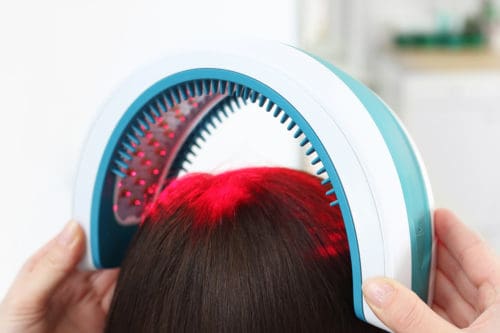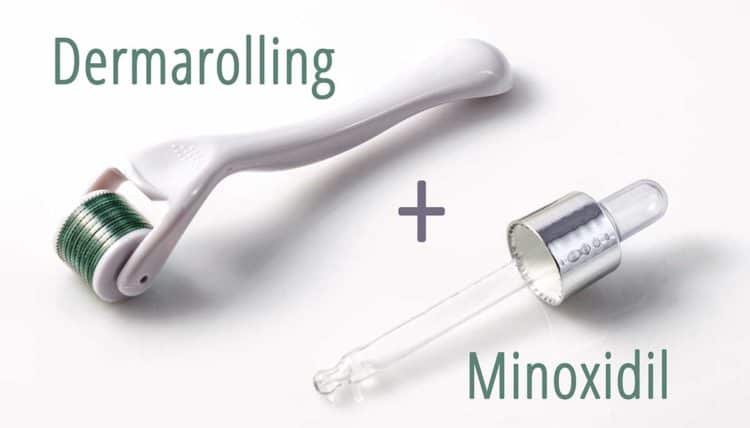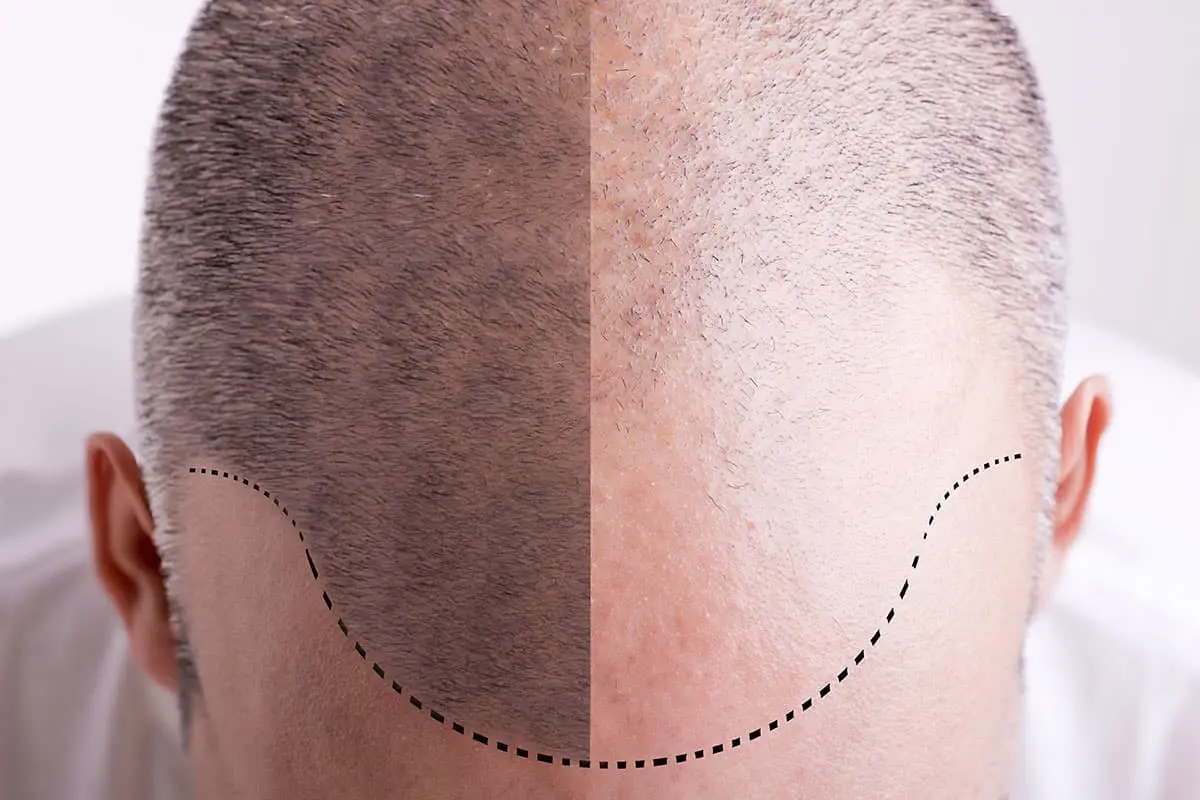Searching for hair restoration? You’re not alone! Approximately 85% of men lose their hair by the age of 50, and 25% of men will lose their hair before the age of 21. If the signs of hair loss are showing, don’t freak out just yet – we have a hair & scalp solution.
Hair restoration methods include any surgical or non-surgical options to replace or regenerate hair follicles or reimpose hair through a hairpiece, such as a man weave or toupee.
New methods of hair restoration may offer a fuller head of hair in a quicker amount of time than other “hair regrowth options” such as Rogaine or hair loss shampoos. If you want to transform a bald head as quickly as possible, hair restoration is your best option.
Surgical Hair Restoration Methods
There are several surgical hair restoration methods depending on the patient’s needs and the degree of hair loss.
Surgical hair restoration methods are commonly performed by a board certified surgeon under general anesthesia.
Hair Transplant
When you search for hair restoration, hair transplants are the most popular result even for celebrities. Both men and women experience thinning or balding, and both genders opt for hair transplants because it’s the only hair loss treatment that leads to long-term, permanent hair recovery.
In the past, “hair plugs” were the dominant hair restoration technique, but new technology, including FUE, FUT, and transplant pens, have changed the game, leading to faster recovery times.
Benefits of surgical hair restoration
- Full head of hair potential
- Long-term hair growth solution
- Your own natural-looking hair
- Customized hairline
- No cutting or styling restrictions
Risks of Surgical Hair Restoration
- Invasive procedure requires anesthesia
- Hair transplant scars
- FUE and FUT methods are more painful
- 7-14 day recovery time
- Infection
- Hair transplants may be rejected
- Poor transplant techniques
We list the top hair restoration clinics so you can see the typical results, services, and most up-to-date costs. When looking for a hair restoration doctor, do your homework and study the reviews.
FUE Hair Transplant
Follicular unit extraction (FUE) is a hair transplant procedure that removes individual hair follicles directly from the scalp or other parts of the body and transfers these follicles into balding areas.
Currently, the FUE procedure is the most successful and commonly used hair transplant method, with a 90% success rate for patients. Scarring is minimal compared to strip transplants or follicular unit transplant (FUT).

Tiny incisions are made at the back of the scalp or, in some cases, on the back, removing healthy hair follicles with tiny needles to collect and implant into the bald areas into your scalp.
Pros of FUE
- No long scar at the back of the head (as with FUT).
- May wear buzz cuts and crew cuts without showing donor areas.
- Best for a small amount of grafts to restore a bad hairline.
- Less recovery time.
Cons of FUE
- Typically, more expensive.
- Surgery takes longer.
- Requires a very experienced, technical doctor.
FUT Hair Transplant
Follicular unit transplant (FUT) is an invasive hair transplant procedure that removes a strip of skin from which healthy follicles are harvested and relocated elsewhere on your scalp. It’s also known as strip surgery.
Before 2017 and the invention of FUE surgery, FUT was the primary type of hair transplant for thinning hair and male pattern baldness sufferers.
One of the main problems with FUT is the way scalp hairs are sourced and collected. The surgeon removes a donor strip of hair from the back of the scalp, which leaves patients with a linear scar that can be quite visible with shorter hair.

Unlike FUE, which uses needles to implant from one follicle to the implantation area directly, FUT follicles are placed under microscopes and the surgeon must divide the grafts of individual units, typically clusters of 1 to 4 hairs.
Afterward, the doctor stitches up the donor strip, and hair can be combed over the area. Stitches are removed after 10 to 14 days. Full recovery time is typically around 30 days.
Pros of FUT
- Better for covering larger bald areas
- Higher yield of hair
- Fuller-looking hair
- No need to shave head
- Shorter time than FUE
- Lower cost than FUE
Cons of FUT
- Long linear scar at back of head
- Requires anesthesia
- May be very painful recovery
- Longer recovery time than FUE and other methods
Hair Transplant Costs
All hair restoration clinics are different, but in the US, online estimates range between $5,000 and $8,000 at a minimum for a hair transplant. If you want more grafts for thicker hair, it could go as high as $15,000 or more, particularly if working with an expert surgeon.
Other Surgical Options
There are variations of FUT and FUE using slightly different devices.
Choi Implanter Pen Technique
The Choi Implanter Pen technique is a direct hair implantation method similar to FUE, except that it uses the “CHOI-PEN” device to extract and directly implant hair follicles one-by-one.

The procedure is faster than both FUT and FUE, but there are considerable side effects and risks, including botched transplants from inexperienced surgeons. Others have suggested that implanter pen methods don’t last as long as FUT or FUE.
Costs of Choi Pen Transplant
The costs for Choi Pen transplants are nearly the same or slightly higher than FUE, so expect to pay around $8,000 minimum for this transplant.
BioGraft
BioGraft is a new procedure developed in 2019 that combines non-surgical and surgical hair restoration for a less invasive hair transplant procedure.
The new BioGraft method uses FUE transplant with Xtrands+ for a fuller hairline and thickness overall, but it may not be suitable for larger transplants on its own. Xtrands+ fills in thinning areas around your hairline, crown, and back for more thickness.
The process with Xtrands+ was developed by Bosley and Hair Club for a faster, less painful approach to hair restoration.
Costs of BioGraft
BioGraft is a procedure that combines FUE with Xtrands+, and pricing depends on the amount of grafts you need to fill in your patches. You’ll likely pay $10,000 at the least for this type of procedure.
Platelet Rich Plasma (PRP)
Platelet rich plasma (PRP) is a hair restoration method that extracts plasma from your blood and injects it back into damaged hair follicles, bringing back blood flow and promoting healthy cells.
Doctors are using PRP to inject platelets into the scalp to trigger hair regrowth and prevent further hair loss. One study from 2014 found that PRP was successful in treating patients with male pattern baldness.
- PRP uses needles, which may cause a little pain and discomfort
Read our full guide on PRP for hair loss to learn more about this incredible procedure.
Costs of PRP
You’ll need at least 3 treatments of PRP to see results, and each one can cost between $250 and $500 depending on where you live. In total, you will likely spend near $1,000 to $2,000 for the first three treatments. Over the course of your life, you’ll need treatments every 6 months.
Stem Cell Hair Transplant
Read more about the game change effects of stem cell hair transplants.
Non-surgical Hair Restoration Methods
If you aren’t ready for stitches and scars, non-surgical hair restoration is the way to go. Non-surgical hair restoration methods focus on covering bald spots with man weave, toupees other less invasive techniques.
Benefits of non-surgical hair restoration
- Fuller head of hair
- No surgery
- Little to no pain
- No scaring
- Less expensive compared to surgical hair restoration
Risks of non-surgical hair restoration
- Hair pieces falling out or not looking “real”.
- Some methods are only a temporary solution.
- Some methods require ongoing maintenance.
- Some processes require full head shaving and “glueing”.
- Hair loss may worsen if you stop taking.
- Some in-home methods may produce no result.
Medications
Two popular medications currently available to regrow hair are minoxidil and finasteride. Both are FDA approved for hair loss, however, each treatment works differently.
Rogaine (Minoxidil)
Originally created by the Upjohn Company in the late 1950s to treat ulcers, minoxidil evolved and was approved to treat hypertension in 1979. Further studies by Charles A. Chidsey MD discovered unexpected hair growth as an unlikely result.
Then, in 1996, generic minoxidil was approved by the FDA for over-the-counter sale and then later marketed under the brand “Rogaine.”
Read more about the benefits and side effects of Rogaine (Minoxidil).
Propecia (Finasteride)
The other FDA approved treatment for balding is finasteride. Originally developed to treat an enlarged prostate, it was later discovered to block dihydrotestosterone (DHT) – responsible for hair loss. The medication is marketed under the brands “Propecia” and “Proscar.”
Read more about the benefits and side effects of Propecia (finasteride).
Low-level Laser Therapy (LLLT)
LLLT is a newer form of non-surgical hair restoration. The laser hair treatment has been clinically proven to stop hair loss by stimulating blood flow and cellular activity, allowing new hair to grow.
Typically, it’s an in-home treatment delivered via laser comb, wand, band, helmet or baseball style cap. It’s been found to be effective in both men and women.

Scalp Micropigmentation (SMP)
Scalp Micropigmentation is the latest trend in hair restoration. It’s a non-surgical procedure that creates the illusion of shaved hair.
An SMP professional will use special instruments that resemble tattoo pens. The machine uses pigments that resemble human hair color and places the pigment under the scalp to resemble hair follicles.
Check out our new guide on Combining SMP and FUE Hair Transplant together for amazing results.
Microneedling
Originally used on the face to treat wrinkles and scars, microneedling is a procedure using a derma roller on the bald or thinning areas of the scalp. The tiny derma roller needles penetrate the skin to generate new collagen, improve blood flow and promote new stem cells.
The studies show microneedling may even be better than minoxidil alone, but even better when combined with minoxidil.

Toupees
Toupees are also known as hairpieces or hair systems that are attached to your head to cover up bald spots. While in the past hair pieces were denigrated for synthetic hair and bad bald makeovers, the latest hairpieces are made from real human hair.
Hairpieces are typically attached via double-sided tape and a waterproof sealant or with glue. One of the main issues with some toupees are that they can’t be styled with heating tools or even get wet, which is why you should always read reviews and find the best hair systems with real human hair.
These are temporary solutions to covering up hair loss and will typically need to be adjusted or replaced after 7 to 14 days, depending on the quality of the toupee.
Costs of Toupees
Synthetic toupees cost the least, but they tend to smell or burn under heat. You can typically find a synthetic piece runs you about $15 to $20 per inch. Most toupees are about 6 inches long or more, which means you’ll likely pay over $100 at the cheapest.
However, it’s best to upgrade to a real human hair toupee with a lace front, which costs around $300 to $500.
Man Weave
A man weave is also known as a hair unit or man unit. It’s a new type of hairpiece that’s attached to your scalp with adhesive. These pieces are typically made from synthetic or real human hair and offered through salons or barbershops specializing in hair loss restoration techniques.
Weaves look more real than toupees because they’re professionally attached and last for a longer period of time, typically up to 3 months. However, you cannot get hair units wet or they may become “loose” and require adjusting by your barber.
Man weaves typically take 1 to 3 hours to install, depending on the type of weave and how much styling you require. These weaves are designed to be cut and colored like natural hair.
Costs of Man Weaves
These restoration methods vary averaging about $200 – $800, but this depends on the salon or local barbershop prices.
Here’s a look at a hair unit being “installed” by a professional stylist:
Other non-surgical treatments
- Scalp Tension Reduction Band
- Hair growth vitamins & supplements, ie biotin and saw palmetto
- Hair growth foods & healthy diet
- Hair loss shampoo or Shampoo for Thinning Hair
- Hair fiber (sprays or powders) to thicken hair and fill in bald spots
- Hair Growth Oil – simple and effective
Does Hair Restoration Really Work?
All methods discussed here will work in varying degrees to restore your hair, where some may be more successful than others. Some hair restoration methods last longer than others, with surgical hair transplants being the more widely accepted permanent option.
FUT and FUE are the most successful and may last the rest of your life. In rare cases, hair transplants may never take hold or fall out or thin out as you get older.
PRP procedures typically require several treatments at first, and after 6 months, you’ll need to return for more treatments or your hair will start to fall out again.
In addition, some hairpieces don’t look real and may not improve your appearance. The best hairpieces will match your hair texture and typically come with a hair system that shows you how to install the piece with a semi-permanent adhesive.
What is The Best Hair Restoration Method?
Depending on what you’re looking for, the most permanent solution that resembles your natural mature hairline and growth would be an FUE or FUT transplant. These procedures are costly, but it’s often regarded as the best solution for hair loss.
If you’re averse to pain or scared of botched hair transplants, we recommend going with a professional man weave if you truly don’t want to go bald. The process is quick and doesn’t involve any kind of surgery.


